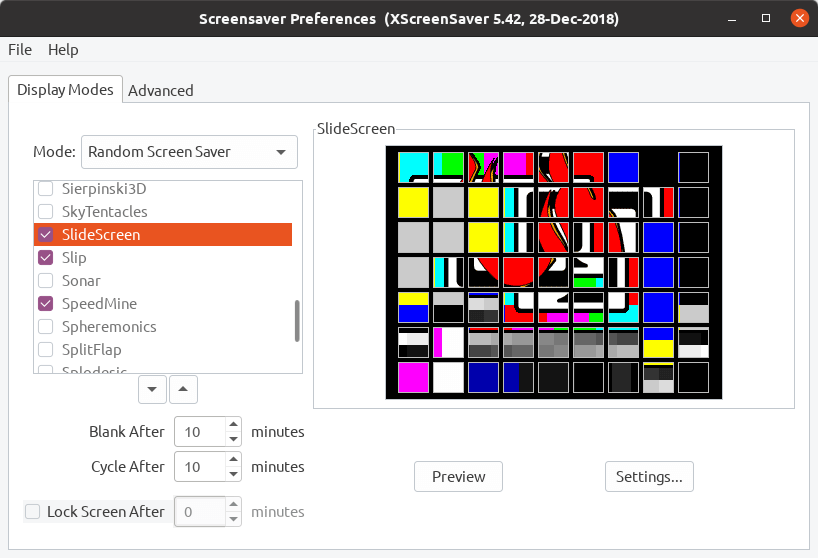

Kill or restart the xscreensaver daemon.Once you have configured all you need in the management tool you can just close it by clicking File and then Quit. Fading and colormaps: Fade to and from settings.Power management: Standby, suspend, and off settings.Text manipulation: Where your screensaver will get text from if needed.Image manipulation: Where your screensaver will get images from if needed.The advanced configuration tab allows you to take care of:

You will also notice a Preview button which allows you to see what your screensaver will look like in fullscreen mode (you get a tiny preview of the working screensaver in a window in the xscreensaver main window.) If this is the case a Settings button will appear in the main window. This particular screensaver is packaged with the xsreensaver-gl-extra package.ĭepending upon the screensaver you choose you might have settings that are available. In Figure 1 you can see the Lament GL screensaver.

How many screensavers are listed in the window will depend upon how many of the packages you installed. If you choose more than one screen saver (or choose Random) the Cycle After configuration will set how long before the screensaver changes. The Display modes tab is where you configure the screensaver you want to use and how soon you want the screen to blank. In this main window you will see there are a number of configuration options to take care of. This will only happen when you first run this (or until you kill the daemon or reboot your machine.) Figure 1 When this window opens a smaller window will also appear informing you the xscreensaver daemon is not running. Which will open up the screensaver management window (see Figure 1). You should find the xscreensaver application in your Preferences menu (depending upon which desktop you are using.) If you can not find the menu entry you can issue the command: Once everything is installed you are ready to run. The xscreensaver package, however, is a much generic package that any Linux distribution, so long as it is running X, can use. Obviously gnome-screensaver and kscreensaver are for GNOME and KDE (respecively). The will generally mean you are looking at one of three screensavers: So the only way to safely add new screensavers is to add those that included with your distribution's repositories. The screensaver is an application that must be linked to X, otherwise it will not work. I have been asked numerous times "How do I have screensaver X on my Linux desktop?" To that I generally reply - "If it's a screensaver you just happened to have found on line, more than likely you can't have it." Why is that? We have been trained that a screensaver should take the place of our work or our play on our monitors. When we do we don't much care to come back to see our screen just the way we left it.


 0 kommentar(er)
0 kommentar(er)
